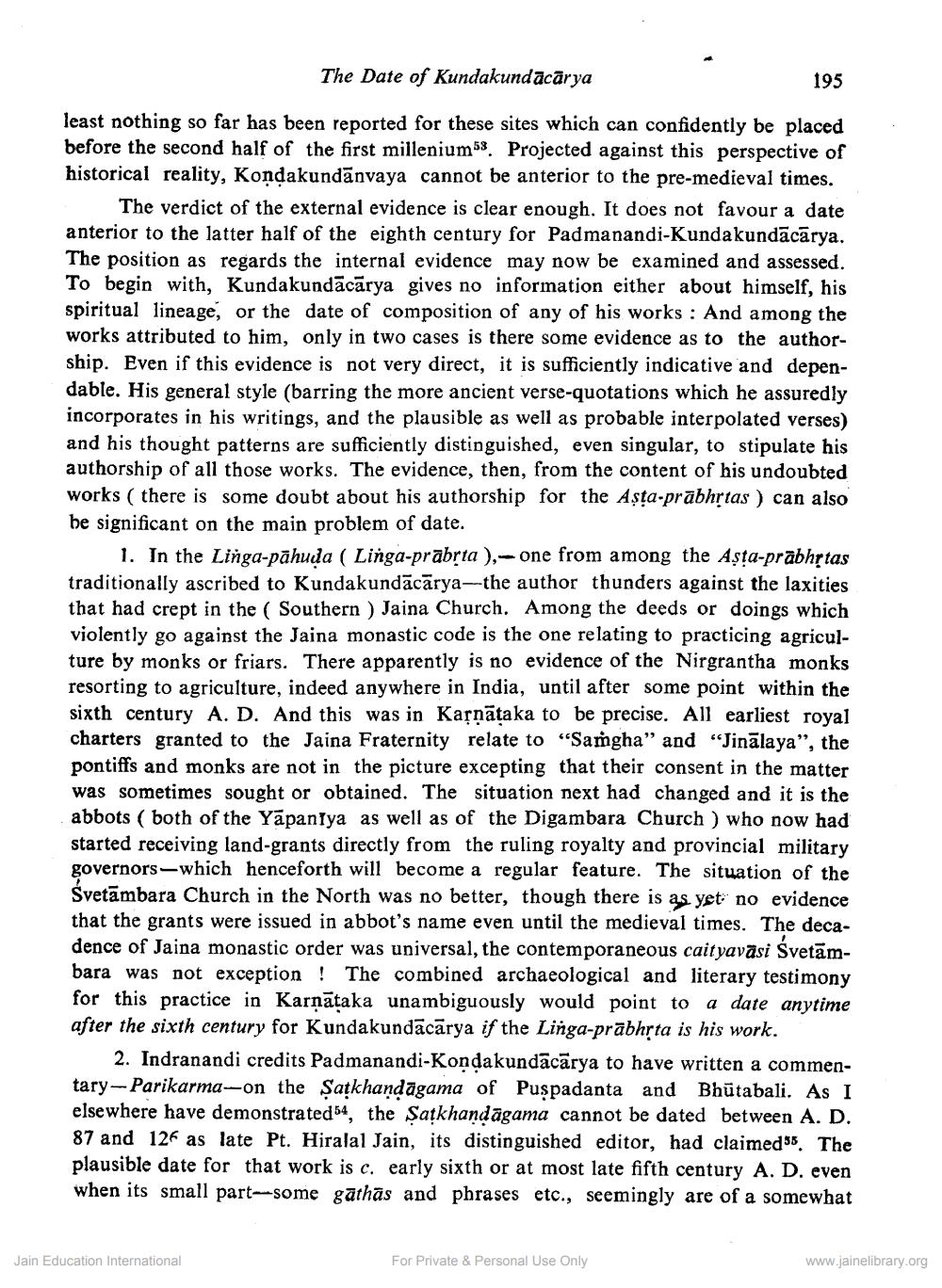Book Title: Date of Kundakundacharya Author(s): M A Dhaky Publisher: Z_Aspect_of_Jainology_Part_3_Pundit_Dalsukh_Malvaniya_012017.pdf View full book textPage 9
________________ The Date of Kundakundācārya 195 least nothing so far has been reported for these sites which can confidently be placed before the second half of the first millenium 53. Projected against this perspective of historical reality, Kondakundānvaya cannot be anterior to the pre-medieval times. The verdict of the external evidence is clear enough. It does not favour a date anterior to the latter half of the eighth century for Padmanandi-Kunda kundācārya. The position as regards the internal evidence may now be examined and assessed. To begin with, Kundakundācārya gives no information either about himself, his spiritual lineage, or the date of composition of any of his works : And among the works attributed to him, only in two cases is there some evidence as to the authorship. Even if this evidence is not very direct, it is sufficiently indicative and dependable. His general style (barring the more ancient verse-quotations which he assuredly incorporates in his writings, and the plausible as well as probable interpolated verses) and his thought patterns are sufficiently distinguished, even singular, to stipulate his authorship of all those works. The evidence, then, from the content of his undoubted works ( there is some doubt about his authorship for the Așta.prābhrtas ) can also be significant on the main problem of date. 1. In the Linga-pāhuda ( Linga-prābrta ),- one from among the Asta-prābhrtas traditionally ascribed to Kundakundācārya--the author thunders against the laxities that had crept in the ( Southern ) Jaina Church. Among the deeds or doings which violently go against the Jaina monastic code is the one relating to practicing agriculture by monks or friars. There apparently is no evidence of the Nirgrantha monks resorting to agriculture, indeed anywhere in India, until after some point within the sixth century A. D. And this was in Karnātaka to be precise. All earliest royal charters granted to the Jaina Fraternity relate to "Samgha" and "Jinālaya”, the pontiffs and monks are not in the picture excepting that their consent in the matter was sometimes sought or obtained. The situation next had changed and it is the abbots (both of the Yāpaniya as well as of the Digambara Church ) who now had started receiving land-grants directly from the ruling royalty and provincial military governors - which henceforth will become a regular feature. The situation of the Svetāmbara Church in the North was no better, though there is as yet no evidence that the grants were issued in abbot's name even until the medieval times. The decadence of Jaina monastic order was universal, the contemporaneous caityavāsi svetāmbara was not exception ! The combined archaeological and literary testimony for this practice in Karnātaka unambiguously would point to a date anytime after the sixth century for Kundakundācārya if the Linga-prābhṛta is his work. 2. Indranandi credits Padmanandi-Kondakundācārya to have written a commentary- Parikarma---on the Satkhandagama of Puspadanta and Bhūtabali. As I elsewhere have demonstrated54, the Satkhandāgama cannot be dated between A. D. 87 and 126 as late Pt. Hiralal Jain, its distinguished editor, had claimed 55. The plausible date for that work is c. early sixth or at most late fifth century A. D. even when its small part--some gathās and phrases etc., seemingly are of a somewhat Jain Education International For Private & Personal Use Only www.jainelibrary.orgPage Navigation
1 ... 7 8 9 10 11 12 13 14 15 16 17 18 19 20
